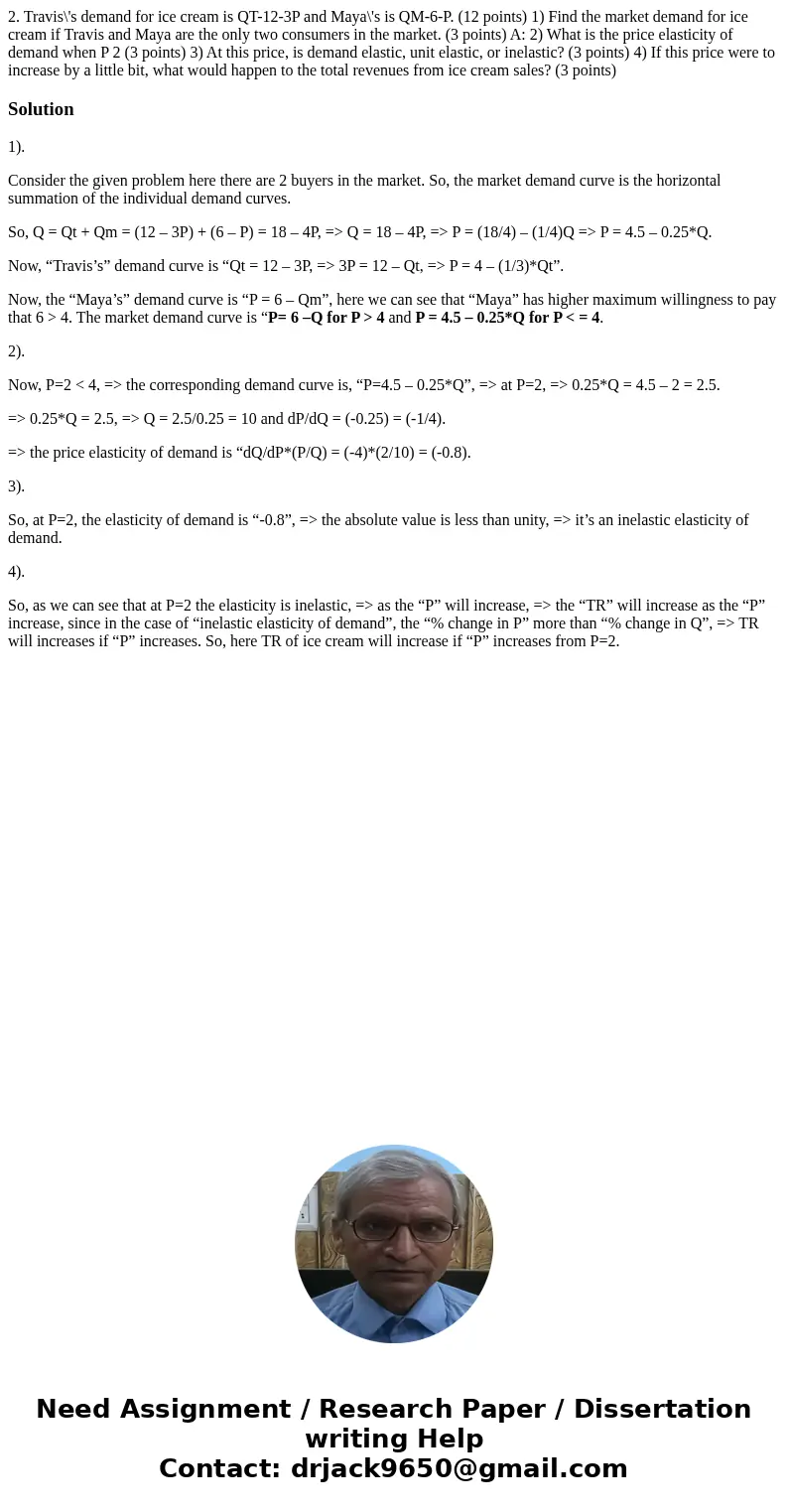2 Traviss demand for ice cream is QT123P and Mayas is QM6P 1
Solution
1).
Consider the given problem here there are 2 buyers in the market. So, the market demand curve is the horizontal summation of the individual demand curves.
So, Q = Qt + Qm = (12 – 3P) + (6 – P) = 18 – 4P, => Q = 18 – 4P, => P = (18/4) – (1/4)Q => P = 4.5 – 0.25*Q.
Now, “Travis’s” demand curve is “Qt = 12 – 3P, => 3P = 12 – Qt, => P = 4 – (1/3)*Qt”.
Now, the “Maya’s” demand curve is “P = 6 – Qm”, here we can see that “Maya” has higher maximum willingness to pay that 6 > 4. The market demand curve is “P= 6 –Q for P > 4 and P = 4.5 – 0.25*Q for P < = 4.
2).
Now, P=2 < 4, => the corresponding demand curve is, “P=4.5 – 0.25*Q”, => at P=2, => 0.25*Q = 4.5 – 2 = 2.5.
=> 0.25*Q = 2.5, => Q = 2.5/0.25 = 10 and dP/dQ = (-0.25) = (-1/4).
=> the price elasticity of demand is “dQ/dP*(P/Q) = (-4)*(2/10) = (-0.8).
3).
So, at P=2, the elasticity of demand is “-0.8”, => the absolute value is less than unity, => it’s an inelastic elasticity of demand.
4).
So, as we can see that at P=2 the elasticity is inelastic, => as the “P” will increase, => the “TR” will increase as the “P” increase, since in the case of “inelastic elasticity of demand”, the “% change in P” more than “% change in Q”, => TR will increases if “P” increases. So, here TR of ice cream will increase if “P” increases from P=2.

 Homework Sourse
Homework Sourse